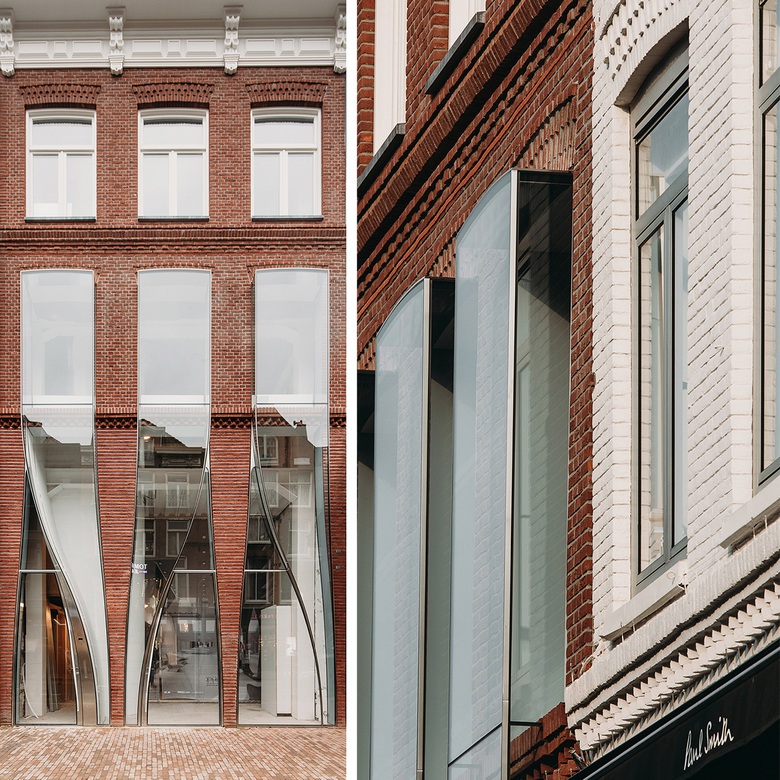The Looking Glass
UNStudio recently completed the renovation of a facade on P.C. Hoofstraat, the exclusive shopping street lined with dozens of Dutch and international fashion boutiques. The Looking Glass, as the architect's call it, features glass boxes that flow like fabric.
Location: Amsterdam. The Netherlands
Client: Warenar Real Estate
Architect: UNStudio
- Project Team: Ben van Berkel, Astrid Piber with Ger Gijzen, Marc Salemink, Sontaya Bluangtook and Lars van Hoften, Pauline Caubel, Paul Challis, Tiia Vahula
Facade Contractor: Octatube Nederland b.v.
Building Area: 240m2 (retail), 130m2 (residential)
Although both sides of P.C. Hoofstraat are lined with three- and four-story traditional Dutch buildings, the thoroughfare is becoming the site of contemporary interventions that explore the meanings and expressions of glass and brick. In 2016 fellow Dutch architects MVRDV completed Crystal Houses, which opened as a Chanel but then soon after was turned into a Hermes. There the architects used glass bricks to transition between traditional brick on the upper floors and the transparency desired by fashion houses along the street. Crystal Houses was developed, and is owned, by Warenar Real Estate, which also commissioned UNStudio to replace the facade at P.C. Hoofstraat 138. The glass and masonry covers a store at the ground floor, which is to be fitted out by the retail tenant, and a two-story apartment upstairs, where UNStudio also designed the interiors.
Looking at the new facade from the top down amounts to a progression from traditional to contemporary. Windows matching the building's traditional neighbors are found on the top floor. Next, the middle floor has projecting boxes of a similar shape and size but with monolithic panes of glass. Finally, at the base, the glass aligned with the boxes above appears to part, like a curtain, to allow views and access into the shop and access to the upstairs apartment. In the architects' words, "fashion and architecture come together to represent and celebrate the craftsmanship and geometry of high-end, tailored clothing, creating harmony between aesthetics and function."
The storefront's three structural glass "box elements" were manufactured off site with laminated, annealed low-iron glass and stainless steel edge profiles. The boxes, as indicated in the below drawing, are much deeper than they appear in photos. Next to the boxes are GRC panels that were installed after the glass boxes were delivered to the site; these panels were covered with rigid insulation and then finished with metal strips on the inside and brick slips on the outside. The resulting storefront of prefab glass boxes and shallow masonry creates a contemporary, theatrical take on the traditional architecture of Amsterdam. With Crystal Houses before it, The Looking Glass portends to more architectural experimentation on P.C. Hoofstraat in the future.
相关文章
-
-
-
Center for Inclusive Growth & Competitiveness for TAPMI
The Purple Ink Studio | 27.10.2025




